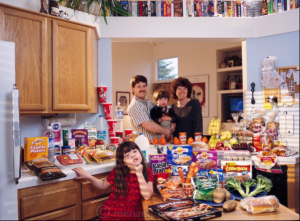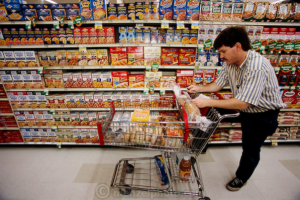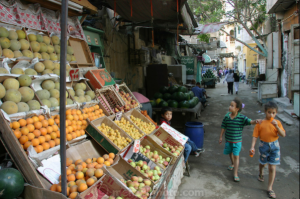

When we take a minute to look at these pictures side by side, several differences begin to show. The pictures show an American family and Egyptian family with the food they will consume in a week.
The thing that first jumps out to me is the types of food that each family chooses to eat for a week. This shows the wealth disparity between the countries. The richer a county is the more of a specialization of labor has taken place. With a specialization of labor you see more food geared towards convenience and speed. You also see a limitation of the amount of locally grown and distributed product because less of the population is involved in food production and people often live in cities where there is no room for local food production. Therefore they must shop at locations where food is brought in for their convenience. Consider the following two pictures and the different way in which the family of Americans and the family of Egyptians shop for their food.


Another reason for this difference of food is political in its origin. We learned that famine is not tolerated in a democratic society. Because of this, it is important for a food system in a democracy to be very stable. In the US we invest and subsidize heavily for food production and in doing so insure against a lack of food supply. Our stores are stocked with entirely too much food for our populations’ consumption with foods that have long shelve lives and with satisfy its consumers. This same infrastructure is not seen in the Egyptian pictures whose government does not rely in the same way on the constant access to an unlimited food supply.
All images from:
Menzel, Peter. 2005. Hungry Planet: What the World Eats. www.menzelphoto.com July 2017
